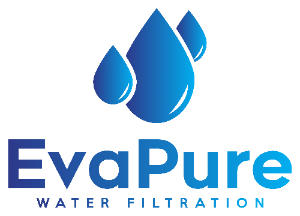For most Australians, turning on the tap means clean, safe drinking water. But beneath the surface lies a complex mix of chemicals, metals, and microscopic particles that can affect your health — and you might be drinking them every day without knowing it.
Understanding What’s in Australian Tap Water
Australia’s water supply is among the most regulated in the world. The Australian Drinking Water Guidelines (ADWG) set strict limits on contaminants to protect public health. However, even treated water can contain trace amounts of substances that, over time, may pose risks.
Common Contaminants Found in Tap Water
-
Chlorine and chloramine: Used to disinfect water and kill harmful pathogens, these chemicals can cause unpleasant tastes and odors, skin irritation, and potential long-term health effects.
-
Heavy metals (like lead and copper): Often originating from aging pipes, these can leach into water and cause developmental, neurological, and kidney problems.
-
PFAS (Per- and polyfluoroalkyl substances): Known as “forever chemicals,” these industrial compounds resist breakdown and have been linked to cancer and immune system issues.
-
Pesticides and herbicides: Runoff from agricultural activities introduces these toxic chemicals into water supplies.
-
Sediment and microplastics: Tiny particles suspended in water can carry bacteria and pollutants into your system.
Why These Contaminants Matter
While many contaminants appear in water at low levels deemed “safe,” recent studies suggest that chronic exposure—even at low doses—can lead to health problems. For example:
-
Lead exposure is especially harmful to children, causing cognitive impairments and behavioural issues.
-
PFAS chemicals accumulate in the body and have been linked to cancers, thyroid disease, and reduced vaccine response.
-
Chlorine by-products may increase cancer risks over long-term exposure.
Furthermore, contaminants like microplastics are an emerging concern with unknown long-term effects but are suspected to cause inflammation and disrupt cell function.
The Limitations of Municipal Water Treatment
Water treatment plants effectively reduce many contaminants but aren’t designed to remove all chemical residues or emerging pollutants. For instance, chlorine disinfectants remain in tap water to prevent bacterial growth in pipes, but their by-products can be harmful.
Similarly, PFAS contamination is notoriously difficult to treat and can persist in water supplies near industrial sites.
Protecting Your Family’s Health with EvaPure
Given these risks, installing a comprehensive home water filtration system is one of the best steps to ensure your family drinks pure, safe water. EvaPure’s advanced filtration systems:
-
Remove chlorine, chloramine, heavy metals, PFAS, pesticides, sediment, and more.
-
Maintain high water flow rates, so there’s no drop in pressure.
-
Are Australian WaterMark certified and come with a 5-year warranty.
-
Offer fixed pricing that includes professional installation and delivery—no hidden fees or gimmicks.
By choosing Evapure, you’re not only improving your water’s taste and clarity — you’re actively reducing your family’s exposure to potentially harmful contaminants.
Clean, safe water shouldn’t be a question mark, it should be guaranteed.
If you’re concerned about what’s really in your water, contact EvaPure today to learn more about our filtration systems and take control of your home’s water quality.

Share:
PFAS in Australian Water: A Growing Concern